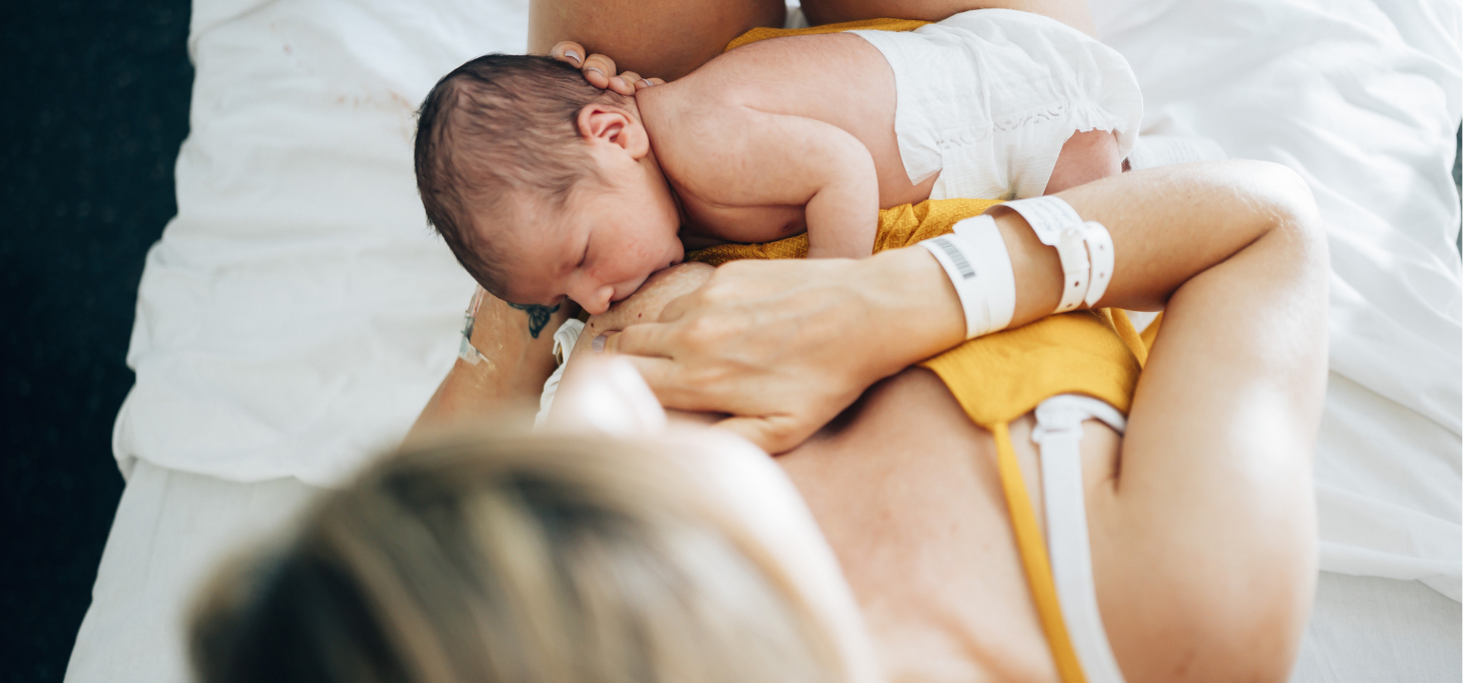Exercise is one of the most effective tools we have to keep our bodies healthy throughout our lifetimes, and this is especially true during pregnancy. Moderate exercise during pregnancy has been repeatedly shown to be safe and have beneficial effects. Pregnant women who exercise are less likely to experience pregnancy-related complications like gestational diabetes mellitus, gestational hypertensive disorders like gestational hypertension in pregnancy or preeclampsia, preterm birth, low birth weight, or cesarean birth, and are more likely to have a vaginal delivery, positive pregnancy outcomes, and improved child health.
If you have elevated blood pressure, chronic hypertension, or a family history of preeclampsia, you may be wondering if exercise during pregnancy is as safe for you as it is for those without risk factors. Research has shown that regular physical activity before and during pregnancy can help keep blood pressure concerns in check and reduce the risk of developing serious conditions. High blood pressure can have a variety of causes and increased risks, so exercise alone isn’t the only answer, but it may be a helpful tool for prevention for most pregnant women. Let’s take a deeper look at the specifics of blood pressure during pregnancy, and how to use exercise to your advantage.
What exactly is high blood pressure?
“Blood pressure” is the force of blood pushing against the walls of blood vessels, specifically the arteries. Blood pressure readings consist of two numbers measured in millimeters of mercury (mm Hg) and separated by a slash (/). The top number represents systolic blood pressure (pressure against the artery walls when the heart contracts), and the bottom number represents diastolic blood pressure (pressure against the artery walls when the heart relaxes). Together, these numbers offer a picture of how hard your heart has to work to transport blood throughout your body.
Normal blood pressure is considered to be around 120/80 mm Hg. Readings that show higher systolic or diastolic blood pressure are called “hypertension” and may prompt further follow up and monitoring.
-
Elevated Blood Pressure: Systolic between 120-129 mmHg and diastolic less than 80 mm Hg.
-
Stage 1 Hypertension: Systolic between 130-139 mm Hg or diastolic between 80-89 mm Hg.
-
Stage 2 Hypertension: Systolic at least 140 mm Hg or diastolic at least 90 mm Hg.
(Source: ACOG.org)
Readings above 140/90 are considered to be significantly elevated and may require treatment in pregnant or nonpregnant individuals. During pregnancy, a rise of 30 mm Hg or more systolic OR a rise of 15 mm Hg or more diastolic from your personal baseline can also indicate cause for concern, even if it does not meet these established definitions.
Several physiological changes come into play during pregnancy that may naturally lower blood pressure, making a hypertensive reading even more concerning. Early in pregnancy blood vessels expand to allow for easier blood flow to sustain the mother and the fetus. Blood volume increases, along with heart rate, stroke volume, and cardiac output, which are also designed to increase blood flow to support the mother and the fetus throughout gestation and may naturally lower a pregnant woman's blood pressure from her non-pregnant baseline.
Though any elevated blood pressure readings may be fairly mild, they may also indicate a more dangerous condition. Things can progress quickly if not addressed, which is one major reason why consistent prenatal care is essential for all pregnant women.
What are the types of hypertension that can occur during pregnancy?
Hypertensive disorders are one of the leading causes of maternal and perinatal mortality, contributing to 16% of maternal deaths globally. You can’t feel your blood pressure changing, and even those with very few risk factors can experience significant blood pressure changes during pregnancy. It’s essential to attend prenatal care appointments and have your blood pressure checked regularly during pregnancy and early postpartum so that you get the care you and your baby need.
How your blood pressure will be monitored and treated depends largely on your medical background, when in pregnancy your blood pressure increases, and if any other signs or symptoms are present. Let’s outline the three broad categories of elevated blood pressure during pregnancy, and what they might mean for you.
Chronic Hypertension
Chronic hypertension refers to elevated blood pressure that a woman has before getting pregnant, or that develops during the first half of pregnancy (up to 20 weeks gestation).
Chronic hypertension can affect a pregnant woman’s heart, kidneys, and increase the risk of stroke if not managed appropriately. It may also limit blood flow to the placenta, which can affect a baby's growth. Fortunately, there are tools and medications available that are safe to use during pregnancy, and your healthcare provider will offer guidance on the best approach for you during your pregnancy.
This type of hypertension may be well established and managed with medications and lifestyle changes before pregnancy occurs. Regardless of how long you’ve had it, your provider will closely monitor your blood pressure throughout pregnancy and in the early weeks postpartum to ensure stability and limit adverse effects. Women with chronic hypertension may also develop preeclampsia during the second half of pregnancy.
Gestational Hypertension
Gestational hypertension is diagnosed if a pregnant woman had normal blood pressure before pregnancy and develops elevated blood pressure after 20 weeks gestation. Specifically, elevated blood pressure in this case is defined as 140 mm Hg systolic or greater, and/or 90 mm Hg diastolic or greater.
This type of hypertension can be mild and usually does not harm the fetus, but it requires frequent monitoring and may increase the risk of developing hypertension later in life. It may also increase the risk of developing preeclampsia in the third trimester of pregnancy.
Gestational hypertension usually resolves within a few weeks after birth. If it does not resolve, it may be re-diagnosed as chronic hypertension.
Preeclampsia
Preeclampsia is elevated blood pressure at or above 140 mm Hg systolic or greater and/or 90 mm Hg diastolic or greater, combined with protein in the urine of a pregnant woman after 20 weeks gestation. This often occurs during the third trimester, usually after 34 weeks. Preeclampsia can also develop for the first time during the first 12 weeks postpartum period, so attending follow up care appointments is also essential.
Eclampsia represents a progression of this condition, often resulting in seizures. Preeclampsia and eclampsia can increase the risk of HELLP syndrome, which is a serious and life-threatening condition involving damage to several organ systems.
Preeclampsia can be dangerous for mom and baby, and affects 6-8% of pregnant women. There is a lot we still don’t know about why some women develop preeclampsia and some don’t; it can occur even with very few risk factors and no known family history. Preeclampsia can come on suddenly and some women do not have overt symptoms, so attending all of your prenatal and postpartum care appointments is essential for monitoring even if you feel well.
Signs and symptoms that may be related to preeclampsia (especially if they begin in the third trimester) include:
-
Elevated Blood Pressure
-
Protein in Urine (Proteinuria)
-
Significant Swelling in Face or Hands
-
Chronic Headaches
-
Will not go away and often described as “migraine-like” or associated with sensitivity to light.
-
- Nausea or Vomiting
- Often onset in the third trimester and not associated with morning sickness.
- Abdominal Pain
- Particularly under the ribs on the right side, and/or right shoulder pain that does not resolve (this may be “referred pain” from the liver).
- Sudden Significant Weight Gain
- More than 3 to 5 pounds in one week.
- Vision Changes
- Including sensations of flashing lights, auras, light sensitivity, or blurred vision.
- Heightened Reflexes
- Shortness of Breath
- Anxiety or Mental Confusion
If any of these signs or symptoms arise, especially if you have not experienced them before late pregnancy, call your healthcare provider right away for further guidance.
(Source: preeclampsia.org)
What are the risk factors for developing gestational hypertensive disorders?
Your personal risk of developing elevated blood pressure at any point in your life depends on several factors, some of which are modifiable. The same risk factors may apply during pregnancy, though it’s important to note that some pregnant women will develop a gestational hypertensive disorder even if they have very few or no prior risk factors.
Though genetics and family history does impact a person's likelihood of developing high blood pressure in their lifetime (and during pregnancy), there are things you can do to reduce your personal risk. These are called “modifiable risk factors”, and include a healthy diet, regular exercise, and avoiding too much alcohol or tobacco. Eating a healthy diet and engaging in consistent exercise have been well established as valuable for keeping blood pressure within a healthy range in the general population, and research shows that these basic lifestyle strategies are also helpful during pregnancy.
There is still a lot we don’t know about why certain people develop preeclampsia. According to the American College of Obstetrics and Gynecology, risk factors for preeclampsia can be broken down into high risk and moderate risk factors which may impact your likelihood of developing this condition.
High Risk Factors for Preeclampsia:
-
Preeclampsia in Prior Pregnancy
-
Carrying More Than One Fetus (Twins or More)
-
Chronic Hypertension
-
Kidney Disease
-
Diabetes Mellitus
-
Autoimmune Conditions (Including Lupus)
-
Multiple Moderate Risk Factors
Moderate Risk Factors for Preeclampsia:
- First Time Pregnancy
- Pregnancy More Than 10 Years After Prior Pregnancy
- Body Mass Index (BMI) Over 30
- Family History of Preeclampsia
- Age 35 or Older
- Complications in Previous Pregnancies (Including Low Birth Weight)
- Pregnancy by In Vitro Fertilization (IVF)
- Black Race (Due to Inequities in Healthcare & Racism That Increase Risk of Illness)
- Lower Income (Due to Inequities in Healthcare That Increase Risk of Illness)
(Source: ACOG.org)
The regular monitoring that you receive during prenatal care visits is essential to identify any changes in your blood pressure, and to make sure your baby is getting all the blood flow they need to grow healthy and strong. This is particularly important if you have any of the above risk factors for preeclampsia, even if you maintain a healthy diet and exercise regularly. Preeclampsia is not necessarily avoidable, nor can we accurately predict who will develop the condition.
Though preeclampsia may not be completely avoidable, research has emerged in recent years that shows benefits of exercise in reducing your personal risk.
How is elevated blood pressure generally managed during pregnancy?
After a high blood pressure reading, you will likely need to monitor your blood pressure readings over the next few days or weeks. You may be assigned a “blood pressure diary” to keep track of your blood pressure at home, or you may be scheduled for weekly appointments with your prenatal care provider.
If your hypertension is severe, your provider may recommend that you start or continue taking blood pressure medication during pregnancy. Additional ultrasounds to check on your baby’s growth may also be recommended, particularly during the third trimester. You may also need to discuss induction of labor a few weeks before your due date to limit risks related to circulation for both you and your baby.
Preeclampsia is considered to be a higher-risk condition than hypertension alone, as it involves several organ systems. As such, you will likely be monitored more closely. If your signs and symptoms are mild, you may be able to stay home and check in with your provider one or two times per week. Your provider may recommend inducing labor a few weeks early to limit further development into eclampsia, depending on how stable your condition is at that time.
Severe preeclampsia may require hospitalization for monitoring, and early delivery may be the safest choice for you and your baby. Your healthcare providers may try to bring your blood pressure down with medications. Sometimes this can help delay delivery even by just a few days so that healthcare providers can administer corticosteroids to support the baby's lung maturity. Once your baby is safely out of your body, you will likely require further consistent monitoring for the first few weeks postpartum to ensure resolution of your preeclampsia symptoms.
Postpartum preeclampsia may go unnoticed, as postpartum medical visits do not happen frequently and many women may dismiss some symptoms as “normal” postpartum recovery. Postpartum preeclampsia can occur even without a personal history of preeclampsia or hypertension, so be sure to attend your postpartum care appointments and contact your obstet if any of the signs or symptoms listed above become noticeable during the first 12 weeks after birth.
Why does exercise help with blood pressure and preeclampsia?
Epidemiology suggests that when we exercise, our muscles require more oxygen than when we’re at rest. That means our heart and blood vessels have to work harder to pump oxygenated blood to our extremities. Research shows that even moderate intensity exercise can greatly improve the health of our heart and arteries by causing them to become more elastic to allow blood circulation as well as promote vascular and metabolic health. This improved elasticity can reduce blood pressure, since the blood vessels become less resistant to the blood flowing through them. This helps prevent cardiovascular diseases and obesity.
In healthy individuals, exercise may temporarily increase heart rate as well as systolic blood pressure during activity (the top number in your blood pressure reading). A moderate increase in systolic blood pressure represents a normal response to exercise, and most of the time this increase resolves within 2 hours after exercise. In fact, your blood pressure may actually read lower than normal during that post-exercise window, and over time it can offer longer lasting benefits. In fact, consistent exercise is one of the most straightforward tools we have to keep blood pressure within a healthy range.
A literature review by Genest et al. discussed potential reasons why exercise training might reduce the risk of developing preeclampsia specifically. Authors point to improved placental development with regular exercise, reduced oxidative stress, improved endothelial function, and reduced inflammatory response with exercising mothers. All of these elements may contribute to reduced risk of preeclampsia.¹
Higher levels of oxidative stress may play a role in the development of preeclampsia. Oxidative stress refers to the free radicals that are released as the uterine and placental blood vessels remodel throughout pregnancy. Higher levels are often seen in women with preeclampsia. Exercise may temporarily increase oxidative stress because of increased blood flow, but it also stimulates antioxidant activity. This antioxidant activity may offer longer term protective effect against the naturally occurring oxidative stress during pregnancy, therefore reducing the risk of developing preeclampsia for pregnant women who exercise.
Impaired endothelial function is a hallmark of preeclampsia, and exercise is a well documented tool that supports endothelial health. The endothelium refers to the innermost cellular layer of our heart and blood vessels. These cells become more efficient at releasing nitrous oxide when we exercise, which in turn supports blood vessel elasticity, reduces likelihood of clotting, and improves cardiovascular health overall. These known benefits may keep blood pressure in check during pregnancy, and therefore reduce risks related to preeclampsia and other gestational hypertension disorders.
Immune function and inflammation may also play a role in development of preeclampsia. During pregnancy the immune system is suppressed to allow the pregnant body to support the fetus and fetal growth. Toward the end of pregnancy, the mother’s immune system begins to normalize. This return to normal could trigger an immune reaction against the fetus, which in turn may stimulate an inflammatory response and contribute to development of preeclampsia. Exercise supports a healthy immune response and reduces inflammation in the long term, and therefore may decrease the risk of this inflammatory response contributing to preeclampsia.
Is exercise safe during pregnancy?
Exercise during pregnancy has been repeatedly demonstrated to be safe and effective in reducing risk of several pregnancy related complications.
Established benefits of exercise during pregnancy include lower growth restriction, a higher incidence of vaginal delivery, and a lower incidence of:
-
Excessive Gestational Weight Gain
-
Gestational Diabetes Mellitus
-
Gestational Hypertensive Disorders (Including Gestational Hypertension or Preeclampsia)
-
Preterm Birth
-
Cesarean Delivery
In a systematic review and meta-analysis by Di Mascio et al. of studies including 2059 pregnant women, researchers determined that aerobic exercise for 35–90 minutes 3 to 4 times per week during pregnancy can be safely performed by normal-weight women with singleton, uncomplicated pregnancies.²
Concerns that exercise during pregnancy contributes to preterm birth have not been demonstrated in research. In fact, there is a significant body of evidence showing that restricted activity or bed rest is actually harmful during pregnancy as it contributes to deconditioning, and in fact provides minimal benefit for most concerns including preterm labor. Even so, many physicians continue to prescribe bed rest and leisure time for certain conditions. If you are prescribed bed rest, it is best to discuss your specific condition and risks versus benefits with your healthcare provider.
Exercise increases blood flow throughout your body, including to the placenta, and subsequently increases nutrient delivery to your baby and help placental growth. It can support your body in managing the increase in insulin resistance associated with pregnancy, thus reducing risk of developing gestational diabetes mellitus. Exercise may also reduce oxidative stress, which improves function of your heart and blood vessels, and therefore can help reduce the risk of developing gestational hypertensive disorders.
There are a few conditions that may require careful monitoring or limits on exercise and activity. These include significant heart disease, severe anemia, and other major cardiovascular diseases. If there is concern that exercise may not be beneficial for you, you will likely be referred to a specialist for further evaluation and monitoring.
How much exercise is best for prevention of gestational hypertensive disorders?
A study by Sorenson et al. examined pregnant women with and without preeclampsia and compared their exercise frequency, type, and intensity during the year before and during pregnancy.³
This study found that women who exercised during the first 20 weeks of pregnancy experienced a 35% reduction in their risk of developing preeclampsia. Furthermore, women who participated in regular strenuous exercise pre-pregnancy and continued to exercise during early pregnancy and the first 20 weeks were 41% less likely to develop preeclampsia and see the positive effects of exercise. Even pregnant women who climbed as few as 1-4 flights of stairs each day demonstrated a modest reduction in preeclampsia risk.
This data suggests that intensity and consistency of exercise may play a role in how effective it may be in reducing the risk of developing preeclampsia. However, it also demonstrates that some activity may be better than none. Authors make the case that nearly every pregnant woman may benefit from consistent exercise before and during pregnancy for the health of themselves and their babies, no matter how active they were before.
What type of exercise is most helpful?
A recent systematic review and meta-analysis by Danielli et al. analyzed research studies that included a total of almost 6,000 pregnant women. Overall, there was a significant reduction in risk of developing a gestational hypertensive disorder, including preeclampsia, in the women who exercised consistently compared to controls.⁴
Researchers found that a combination of aerobic exercise and strength training may be more beneficial than aerobic exercise alone. Yoga, either combined with aerobic activity or alone, was also highly effective in reducing risk of a gestational hypertensive disorder. This may be in part because yogic breathing exercises reduce vagal tone, which can lower heart rate and blood pressure. Yoga practice may also reduce cortisol levels (the stress hormone), which may in turn reduce blood pressure.
How do I monitor intensity?
Your usual tools for measuring intensity may not apply, since heart rate, blood volume, and cardiac output all experience major fluctuations during pregnancy. For instance, you may feel you become out of breath more easily, particularly during the early weeks of pregnancy. This is normal and to be expected, but it can make measuring the intensity of your exercise a real challenge!
One method that can take out some of the guesswork is the Rate of Perceived Exertion (RPE) scale. The classic scale runs from 6-20, with 6 representing no exertion and 20 representing maximal exertion. Ideally, exercise with moderate to strenuous exertion will fall somewhere in the 12-16 range. Some people prefer to modify this scale to a 0-10 range for simplicity. With this variation, moderate activity would fall somewhere between 4-6, and vigorous activity between 6-8.
This scale is entirely subjective, so it’s completely up to how you feel. You alone get to decide how hard you feel you are working, which helps take some guesswork out of hard “limits”. It’s generally considered to be a safe way to evaluate your intensity for most women, since it requires you to be closely in tune with your body and helps avoid overexertion.
Prevention is great but what if I’ve already been diagnosed with a gestational hypertensive disorder?
Before changing your current levels of activity, make sure to speak with your gynecologist and obstetrician. They know your personal background, risk factors, severity of your condition, and fitness level. They will be well equipped to help you make an informed decision about your body and whether increased or decreased activity may be beneficial in your case.
Some hypertensive conditions like preeclampsia can change rapidly, so if you’ve already been diagnosed you may need to monitor your vital signs or temporarily limit the intensity of your workouts. If you have longer-standing hypertension, your healthcare provider will likely recommend keeping up with your exercise routine for pregnancy and long term health.
If you haven’t been exercising but you’d like to begin, make sure to start slowly and progress gradually so as not to over-stress your body. Aim for 30 minutes at least 4 times per week, and use the RPE scale described above to maintain a moderate level of exertion.
Depending on the specifics of your condition and history, a physical therapist may be able to support you with creating an exercise plan that’s appropriate for you. They may monitor your cardiovascular system while you move around to see how your body responds and recovers. They can assist you in maintaining your health without inappropriately stressing your cardiovascular or musculoskeletal systems.
What’s the take-home message?
In summary, exercise before and during pregnancy may offer significant benefits to prevent or reduce severity of gestational hypertensive disorders, including preeclampsia. It’s important to note that though these findings are significant, they do not eliminate the risk of these conditions completely. Exercise will help most pregnant women have a healthier pregnancy all-around, but should not be used as a substitute for comprehensive prenatal care.
Above all, speak to your healthcare provider before beginning a new exercise program, and discuss your exercise plan any time there are significant changes in your health to make sure you’re getting what your body needs.
Resources:
- Genest DS, Falcao S, Gutkowska J, Lavoie JL. Impact of exercise training on preeclampsia. Hypertension. 2012;60(5):1104-1109. Doi: https://doi.org/10.1161/HYPERTENSIONAHA.112.194050. Accessed July 5, 2022.
- Di Mascio D, Magro-Malosso ER, Saccone G, Marhefka GD, Berghella V. Exercise during pregnancy in normal-weight women and risk of preterm birth: a systematic review and meta-analysis of randomized controlled trials. 2016;215(5):561-571. Doi: https://doi.org/10.1016/j.ajog.2016.06.014. Accessed July 5, 2022.
- Sorensen TK, Williams MA, Lee IM, Dashow EE, Thompson ML, Luthy DA. Recreational physical activity during pregnancy and risk of preeclampsia. 2003;41:1273-1280. Doi: https://doi.org/10.1161/01.HYP.0000072270.82815.91. Accessed July 5, 2022.
- Danielli M, et al. Effects of supervised exercise on the development of hypertensive disorders of pregnancy: a systematic review and meta-analysis. 2022;11(3). Doi: https://doi.org/10.3390%2Fjcm11030793. Accessed July 5th, 2022.









